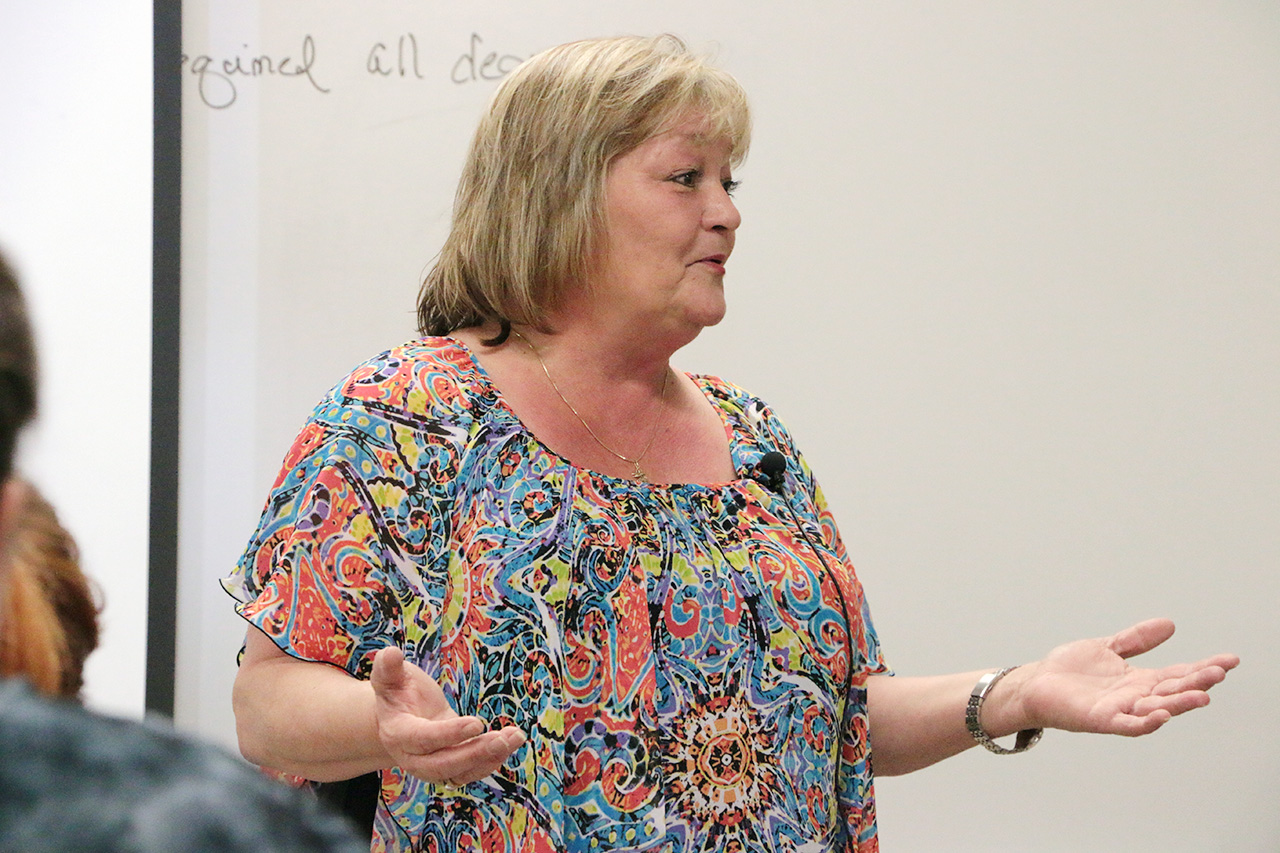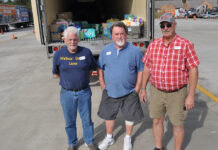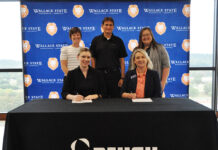HANCEVILLE – It could happen to you. That was one of the points Lynn Caffery made to students, faculty and staff at Wallace State Community College recently in a talk about human trafficking. The subject is one Caffery knows about from first-hand experience as a victim and now as an advocate for other victims.
Caffery is the executive director of Tennessee Valley Family Services, a nonprofit organization assisting runaway, homeless youth and human trafficking victims. She also oversees Koru Silver House, their transitional living program for youth 16 to 22 years old who are at high risk for human trafficking, drug abuse and other crimes.
She was invited to speak to by sociology professor Dr. Susan O’Rear and psychology professor Stacey Brunner, who are members of the Cullman Human Trafficking Task Force, and met Caffery at the State Human Trafficking Summit in February. She spoke to Social and Behavioral Science and Criminal Justice students at the event hosted by the WSCC Diversity Committee.
“These students will be on the front lines of the battle against human trafficking,” said O’Rear. “They – and the general public – need to know what is really going on in our communities and that this is not something that’s only happening in big cities or overseas.
“Awareness is key to understanding this growing social problem that we have,” O’Rear added. “And if we can keep people from falling victim to these predators or rescue those who have, we have a chance of improving our world for the better.”
Caffery’s childhood would in no way be described as normal, far from it, in fact. Caffery said she was abandoned as infant, “left to die” in her crib until the downstairs neighbors took her in. That was just the beginning of her horror story, however. Her first memory, she said, is of when she was 5 years old and the room where she lived, ate and slept was the bathroom.
The people she thought of as her parents sexually abused her until she was sent to live with who she believed was her grandmother. While it was then discovered she had been abused, her grandmother didn’t believe her son was capable of such a crime. At 8, she said she was “run off” from her grandmother’s house and returned by the Department of Human Resources to the home of her abuser.
Caffery said at the age of 11 she ran away and was living on the streets of Oklahoma City when she was taken in by a motorcycle group, where she was given drugs for the first time, chained to motorcycles or beds and passed around from one man to another. She escaped them, only to find herself with Mexican cartel being forced into trafficking guns and drugs. That led to a prison term, but it also provided a way out of the cycle she never asked to enter from the time she was an infant.
“No child wakes up and says, well, I want to be a prostitute or I want to be sexually abused,” Caffery said. “I didn’t wake up at 5 years old and say I wanted to be sexually abused. Some kids don’t realize they have choices, because they’ve been taken away from them by the people who are selling them or abusing them.”
While her story is an extreme version of human trafficking, Caffery said it could happen to anyone at anytime and anywhere. Human traffickers use the Internet, public events, schools and even natural disasters to seek out victims. They prey on the vulnerable and insecure, but anyone can be a victim, Caffery added. They will use social media, online ads and chat rooms to meet potential victims and lure them into face-to-face meetings. They will try to make their victims fall in love with them so they won’t think of themselves as victims. They will intimidate current victims to recruit new victims. They will resort to kidnapping.
Human trafficking, Caffery said, is a big business, generating $150 billion worldwide. It’s the fastest growing crime in the United States and worldwide and will soon surpass drugs as the number one crime in the U.S.
“Why?” she said. “Because if you’re dealing drugs you have to resupply. A human can be used over and over again.”
And human trafficking is not a crime that happens far away from us, she added. With three major interstates in Alabama, the state is part of one circuit that travels down Interstates 65, 20 and 10 plying their illegal trade and searching out new victims. The route follows a circuit from Memphis, Nashville, Knoxville, Chattanooga, Huntsville, Birmingham and Atlanta, with stops in most of the small towns in between.
“Every little town in the process, they’re stopping and selling their victims,” Caffery said.
And these human traffickers “look just like you and me,” Caffery said, showing a slide with mug shots of eight individuals arrested in North Alabama for human trafficking. Two of the photos were of a mother and son convicted of holding a woman against her will and prostituting her to make money.
The human traffickers will brand their victims with tattoos. “One thing I hate to see is a tattoo of a barcode,” Caffery said of one of the brands often used. “Daddy’s Girl” is another brand she said and sometimes the victims will have a tattoo matching that of their “pimp.”
Caffery encouraged everyone to pay attention to their surroundings and to look for signs of abuse and report it to a school social worker or local law enforcement. There are also hotlines specifically for human trafficking. The National Human Trafficking Hotline is 1-888-373-7888 and The WellHouse hotline at 1-800-991-0948.



























